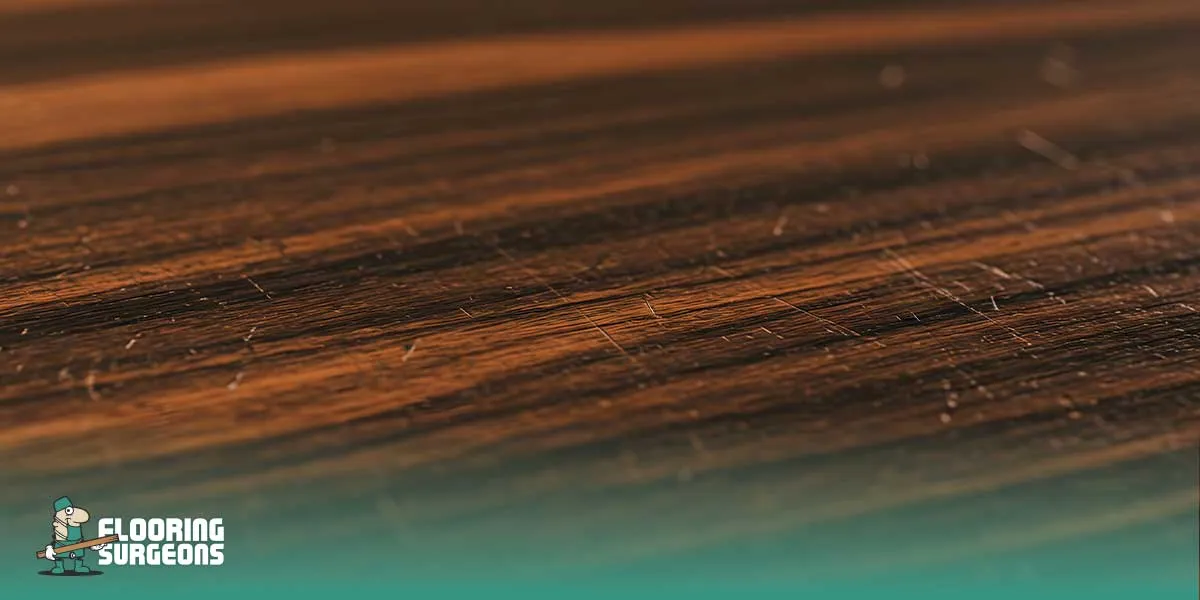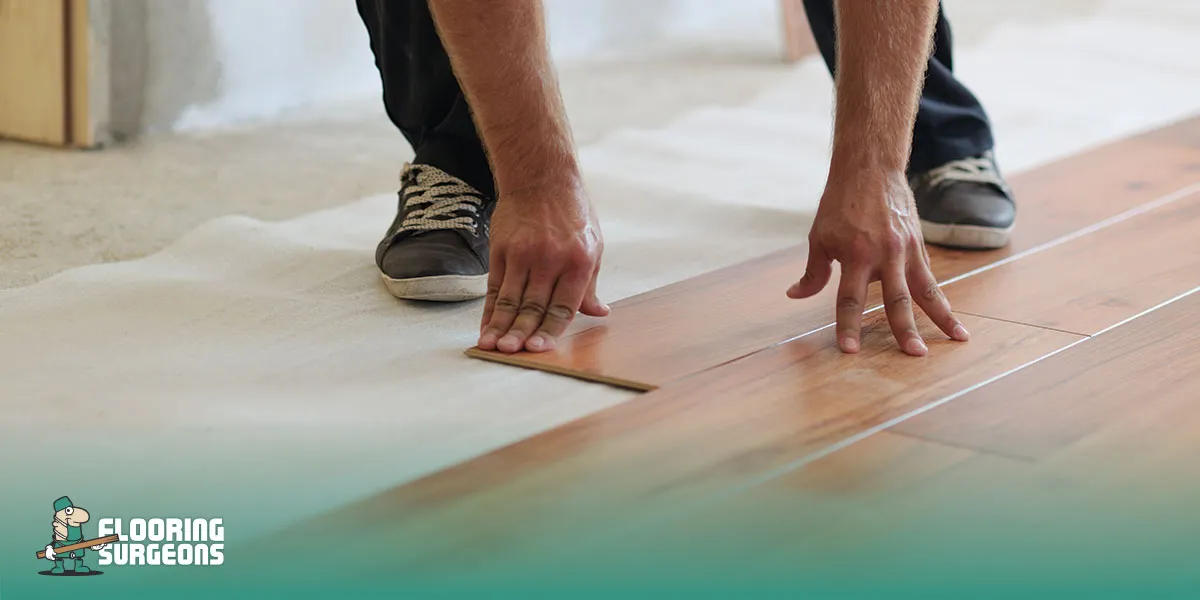Bamboo flooring is gaining popularity in 2025 because it delivers a rare mix of hardwood-like performance, rapid renewability, and a design presence that feels both modern and naturally grounded.
What truly sets bamboo apart this year isn’t just the sustainability label everyone already knows; it’s the shift in how homeowners evaluate the materials in their homes. People are no longer choosing floors based only on colour or budget; they’re looking at regrowth cycles, embodied carbon, acoustic comfort, indoor air quality, and how well a floor contributes to a calmer, more biophilic living space. Bamboo fits neatly into this new mindset: fast-growing, low-chemical, visually warm, and engineered to rival the stability and strength of traditional timber.
Another unexpected driver of bamboo’s rise in 2025 is its ability to slot comfortably between categories. It offers the character of wood without being hardwood, the stability of engineered floors without the multi-layered construction, and the natural aesthetic many homeowners want without demanding a high-maintenance lifestyle. This balance is exactly why architects and interior designers are revisiting bamboo for contemporary renovations, minimalist spaces, and wellness-oriented interiors.

Of course, different flooring types, from laminate to LVT to engineered wood flooring, still lead the market in their own right, each serving different needs. Yet bamboo’s growing relevance stems from its not trying to replace these options; instead, it offers a fresh alternative for homeowners who value authenticity, environmental transparency, and long-term performance. In this article, we uncover the lesser-known reasons behind bamboo flooring’s momentum, explore where it excels, compare its performance with other popular flooring choices, and help you decide whether this natural material aligns with the expectations of your home or project in 2025.
What Makes Bamboo Flooring a Trending Choice in 2025?
Bamboo flooring is trending in 2025 because it gives people a strong, natural-looking floor that’s easy to live with and doesn’t come with the high cost or high maintenance of traditional wood. One of the biggest surprises for many homeowners is just how tough modern hard bamboo flooring really is. Strand-woven options are designed to resist dents, scratches, and everyday wear, so they hold up well in homes with kids, pets, and constant activity. This practical strength is a significant reason why people are giving bamboo a second look.
Performance over time is another key factor. The bamboo floor’s durability, many buyers say, isn’t just marketing; they notice it after installation. Bamboo stays stable, feels solid underfoot, and keeps its clean look without needing special products or complicated care routines. At the same time, bamboo appeals to anyone wanting a home that feels natural, calm, and warm. Natural bamboo flooring has a simple, clean style, and because bamboo grows so quickly, many people appreciate knowing they’re choosing a more renewable material without paying extra. When you add all these bamboo flooring advantages together, strength, long-lasting performance, easy upkeep, and a natural look, it becomes clear why bamboo has become one of the most talked-about flooring choices of 2025.
The Key Advantages of Natural Bamboo Flooring
Natural bamboo flooring has become a favourite among homeowners because it offers the warm look of wood with a lighter feel, easier care, and a price point that makes upgrading more realistic. One of the main reasons bamboo flooring is popular is that it offers a natural style without the heavy upkeep that often comes with traditional hardwood. Bamboo also performs surprisingly well in everyday homes. Modern bamboo wood flooring is stable, smooth underfoot, and works in a wide range of interiors — from simple, clean designs to more cosy, traditional spaces. Many buyers appreciate that it feels natural without being too soft or too difficult to maintain.

Another advantage is choice. Today’s bamboo floors come in different colours, finishes, and construction methods, including the high-strength strand-woven bamboo flooring that’s known for its impressive durability. This variety allows homeowners to choose something that matches both their style and lifestyle without being limited to a single look.
Overall, natural bamboo flooring offers a balanced approach: it looks good, lasts well, and fits comfortably into modern living. And when you consider the importance of flooring in health, it becomes clear that choosing a natural material like bamboo isn’t just an aesthetic decision — it also influences indoor air quality, reduces exposure to harsh chemicals, and contributes to a more comfortable everyday environment. That’s precisely why more people are beginning to see it as a practical and health-conscious alternative to other flooring types.
Sustainable Flooring Benefits of Bamboo Floors in Modern Homes
Bamboo floors are considered a sustainable option because bamboo grows quickly, renews itself naturally, and can be used without putting pressure on long-term resources. For many homeowners, this simple fact is a significant reason why bamboo flooring is popular, especially among people who want their homes to feel more natural and environmentally responsible. Unlike slow-growing hardwood trees, bamboo can be harvested and regrow within a few years. This makes bamboo flooring appealing to anyone looking for a greener choice that still delivers a firm, stylish surface. It lets you enjoy a warm, natural material without feeling like you’re making a significant environmental impact.
Even in its most durable form, like strand-woven bamboo flooring, the material remains a renewable, low-waste option. This combination of sustainability and performance is rare in the flooring world and is one of the main reasons bamboo continues to gain attention in 2025. In short, bamboo offers a way to bring natural beauty into the home while keeping its long-term impact low, something modern homeowners increasingly seek.
Why Homeowners Prefer Hard Bamboo Flooring Over Alternatives
Homeowners often choose hard bamboo flooring because it offers the strength they need without the weight, cost, or maintenance that can come with other materials. Many people are surprised to learn why bamboo flooring is popular today — it’s not just about style, but also about how well it stands up to everyday wear and tear. The strongest version, strand-woven bamboo flooring, is made by compressing bamboo fibres under high pressure, creating a dense and durable board that can withstand busy households. This level of toughness is a significant reason homeowners compare bamboo to hardwood and often see it as a more reachable option.
At the same time, bamboo wood flooring keeps a natural look that works well in most homes. It feels warm, looks clean, and doesn’t demand constant care. And because it offers this balance of durability and simplicity, many homeowners who might otherwise struggle with decisions like how to install solid wood flooring on concrete find bamboo to be a far more practical and flexible option. This combination of strength, style, and low maintenance is exactly why so many people choose bamboo over other alternatives on the market. For anyone wanting a natural floor that performs well without becoming high-maintenance, hard bamboo flooring has become an increasingly attractive choice.
Understanding the Durability of Bamboo Wood Flooring
Bamboo wood flooring is known for being far more durable than most people expect, mainly because its structure becomes strong and stable after processing. This is what gives bamboo flooring durability a solid reputation among homeowners who want a natural floor that can handle daily use without wearing out quickly. The strength of bamboo comes from the way its fibres are arranged and compressed, creating a board that resists dents, marks, and everyday movement around the home. Even in busy rooms — hallways, living areas, and kitchens- bamboo stays firm underfoot and keeps its clean, consistent look.
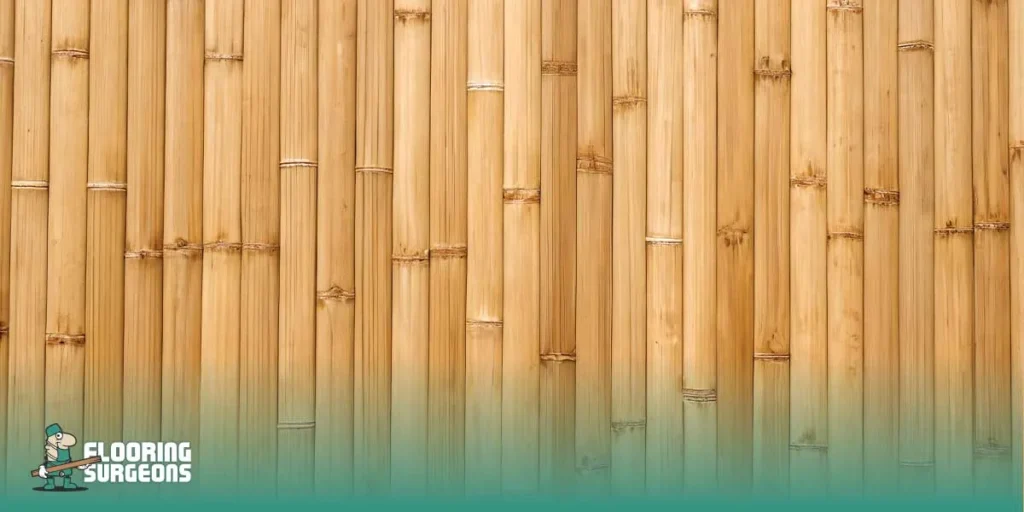
Moisture performance is also part of its durability, although, like any natural material, bamboo can react to humidity changes. Understanding common bamboo flooring moisture issues helps homeowners prepare the space properly so the floor stays stable for many years. Overall, bamboo’s durability comes from a mix of natural strength, innovative engineering, and proper installation.
How Strand-Woven Bamboo Flooring Achieves Superior Hardness
Strand-woven bamboo flooring is harder than standard bamboo because the fibres are tightly compressed under high pressure, creating a dense, high-performance board. This process is what gives the hardness of bamboo flooring its impressive rating, often placing strand-woven styles above many traditional hardwoods on durability scales.
The compressed structure means the floor can handle heavy furniture, heavy traffic, and everyday bumps without showing noticeable marks. This makes it ideal for family homes, open-plan living areas, or any place where floors need to stay looking good despite constant use. Because strand-woven boards are so dense, they’re also more resistant to small changes in temperature and humidity. While homeowners still need to be mindful of bamboo flooring moisture issues, strand-woven options are generally more stable and less reactive than many assume.
Bamboo Flooring Durability Compared to Traditional Hardwood Flooring
Bamboo flooring often matches — and sometimes even outperforms — traditional hardwood flooring in durability, thanks to its dense fibre structure and engineered construction. Homeowners are frequently surprised that bamboo flooring’s durability can stand side-by-side with strong wood species like oak or maple, even though bamboo isn’t technically a tree. Hardwood has natural grain patterns that can create weak points, while bamboo’s fibre layout is more uniform, helping it resist dents and scratches more consistently. Strand-woven bamboo, in particular, can reach a hardness level that many hardwoods struggle to match.
However, just like hardwood, bamboo needs proper care around moisture. Changes in humidity or spills left for too long can cause bamboo flooring moisture issues, so installing it in controlled environments and using the right underlays makes a noticeable difference. And when you look at how bamboo compares to other options while choosing the best type of flooring, it becomes clear that—when properly cared for—it stands out as a strong, long-lasting alternative to traditional wood flooring.
Bamboo Flooring and Moisture: What You Need to Know
Bamboo flooring can withstand everyday moisture well, but, like any natural material, it needs the right conditions to remain stable and long-lasting. Even natural bamboo flooring is still made from fibres that react to humidity, which means proper preparation and installation matter just as much as the product itself.

When cared for correctly, bamboo offers substantial bamboo flooring advantages — including good stability, easy maintenance, and a comfortable feel underfoot. Understanding how bamboo behaves in relation to moisture helps homeowners avoid issues before they occur. Whether you choose standard bamboo or hard bamboo flooring, the goal is to manage humidity so the floor keeps its shape, colour, and strength for years.
Common Bamboo Flooring Moisture Issues and Prevention Tips
The most common moisture issues with bamboo flooring stem from humidity changes, excess water, or installing the boards before the home is dry. The easiest way to avoid them is to prepare the space properly from day one. When moisture levels aren’t controlled, even floors with strong Bamboo floor durability can experience swelling, slight gaps, or surface lifting.
Most problems can be prevented with simple steps: letting the bamboo acclimate to the room, using the right underlay, cleaning spills quickly, and keeping indoor humidity within a safe range. These actions protect both standard and hard bamboo flooring, ensuring it stays flat, stable, and attractive. Even though bamboo reacts to moisture like hardwood does, homeowners can avoid almost all issues by following these basic practices — and that’s one of the key bamboo flooring advantages that makes it easier to manage than many expect.
Why Moisture Testing for Bamboo Flooring Is Essential Before Installation
Moisture testing is essential because bamboo flooring needs a stable environment to perform well, and the only way to verify that is to measure moisture in both the boards and the subfloor before installation. Without testing, even durable options like hard bamboo flooring can shift or tighten once the floor is down. A quick moisture test ensures that the subfloor is dry enough and that the bamboo has adjusted to the home’s conditions. This step directly affects Bamboo floor durability, helping the boards stay firmly locked in place and preventing future problems like cupping or lifting.
Moisture testing also supports the overall advantages of bamboo flooring, as it allows homeowners to enjoy the long-term strength and stability of natural bamboo flooring without unexpected surprises. It’s a simple step that protects the floor, the installation, and the investment.
Bamboo Flooring Installation Best Practices for 2025 Projects
The best way to install bamboo flooring in 2025 is to prepare the room carefully, stabilise moisture levels, and choose an installation method that suits your subfloor and daily use. These simple steps make the installation smoother and help you get the full benefits of bamboo flooring, from stability to long-term durability.
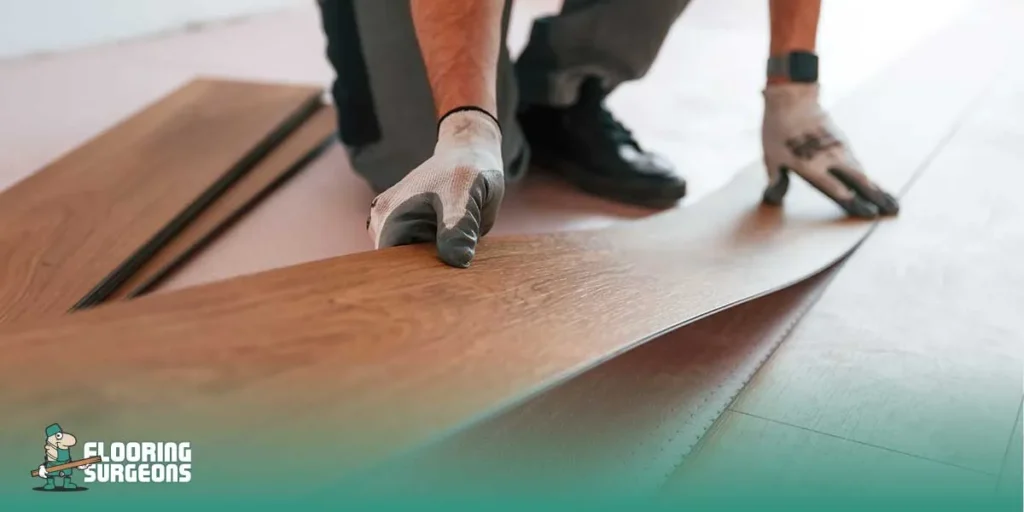
Before anything else, the bamboo should acclimate to the room for at least 48–72 hours, especially in homes with recent construction or new heating systems. A flat, dry subfloor is essential — even small dips or moisture pockets can affect the finished look. Following these basics lets homeowners enjoy all the advantages while avoiding the main pros and cons of bamboo flooring related to installation challenges.
Click-Lock vs Glue-Down: Which Bamboo Flooring Installation Method Fits Your Space?
Click-lock is better for a fast, clean installation with fewer risks. At the same time, glue-down works best for maximum stability or in areas with heavier foot traffic—and choosing the right method is often the difference between a floor that lasts and one that shifts over time. If you want simplicity and fewer steps, click-lock fits perfectly into the benefits of bamboo flooring for modern homes.
Click-lock bamboo boards float over the subfloor, making them ideal for DIY projects, upstairs rooms, and spaces where you want minimal disruption. It also avoids adhesive-related complications — one of the common cons in the broader pros-and-cons conversation about bamboo flooring. Glue-down, on the other hand, gives a firmer feel underfoot and reduces movement, especially with strand-woven or wider boards. It’s a wise choice for larger rooms or busy living areas, but it requires proper moisture testing and professional installation to avoid issues later.
In short:
- Choose click-lock for speed, flexibility, and easier maintenance.
- Choose glue-down for extra stability and a more solid walking experience.
Is Bamboo Flooring Good for Long-Term Home Value?
Yes — bamboo flooring can increase long-term home value when it’s installed correctly and maintained in stable conditions, because buyers see it as a modern, sustainable alternative to traditional hardwood. A properly done bamboo flooring installation creates a clean, premium look that holds up well over time and appeals to eco-conscious homeowners.
Value also depends on preparation: homes that manage humidity well and conduct proper moisture testing for bamboo flooring before installation avoid issues like lifting or gapping, which help preserve both durability and appearance. And because these steps directly affect labour time, material choices, and the overall process, they also influence flooring installation costs in the UK, a key factor for homeowners who want a stable, long-lasting floor without unexpected expenses. When everything is planned correctly, bamboo becomes a strong selling point, especially in properties marketed as energy-efficient or sustainably designed.
Does Bamboo Flooring Increase Home Value Compared to Other Sustainable Floors?
In most cases, bamboo flooring can increase home value more than many other sustainable flooring options because it delivers the look and feel of hardwood at a more accessible price, making it attractive to a broader group of buyers. When paired with a professional bamboo flooring installation, it creates a high-quality finish that rivals oak, maple, and other premium wood floors. Compared to cork or linoleum, bamboo often performs better in busy living areas because of its higher hardness rating and strong resale appeal. However, its value impact still depends on the basics: proper acclimation, correct adhesives, and moisture testing for bamboo flooring before installation. Homes that skip these steps risk moisture-related issues, which can reduce long-term value.
In short: bamboo boosts value when you install it carefully, control humidity, and keep the finish looking clean and modern — making it one of the strongest value-friendly sustainable flooring choices.
Bamboo vs Laminate vs Hardwood Flooring – Which Option Performs Best in 2025?
Bamboo flooring performs best overall in 2025 because it delivers the durability of hardwood and the affordability of laminate while offering a far more sustainable footprint. Homeowners seeking long-lasting, eco-friendly floors find sustainable bamboo flooring the option that best balances strength, style, and value.
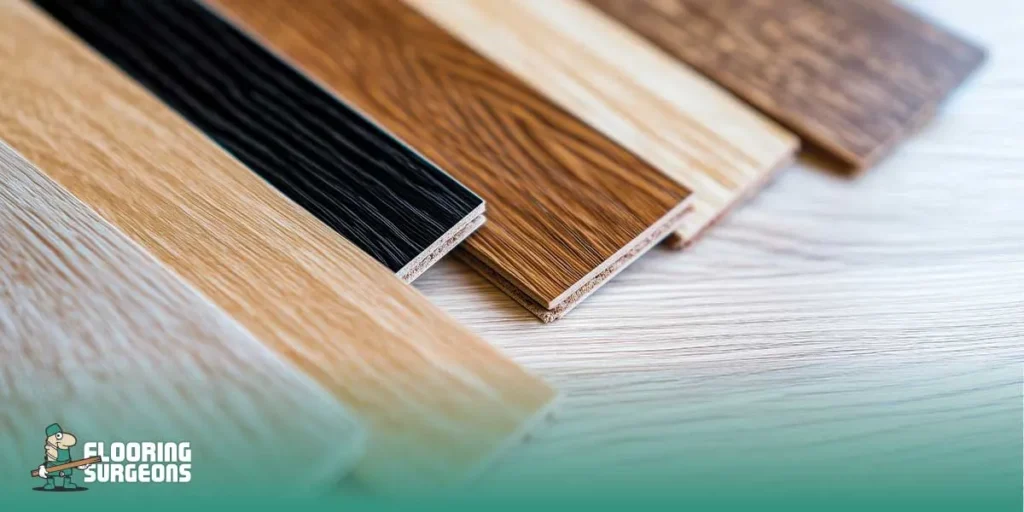
Laminate still wins on low cost, and hardwood remains the premium choice for traditional homes. Still, bamboo sits in the “sweet spot”: harder than many wood species, more stable than laminate, and significantly greener than both. This is why bamboo continues to trend in modern interior design and long-term renovation projects.
Why Bamboo Flooring Outperforms Laminate in Durability and Sustainability
Bamboo flooring outperforms laminate because it’s naturally stronger, more stable under pressure, and far better for the environment right from the manufacturing stage. Laminate relies on synthetic layers and resins that can wear down or swell over time, while bamboo — especially strand-woven — offers a long-lasting, solid feel with higher resistance to dents and daily wear. Where laminate flooring struggles with moisture and often needs to be replaced sooner, bamboo maintains its structure for many years when installed correctly. And from a sustainability standpoint, laminate can’t compete at all: bamboo regrows in a few years, requires fewer chemical processes, and fits perfectly into the rising demand for sustainable bamboo flooring. For homeowners wanting durability without sacrificing eco-values, bamboo is the clear winner.
Bamboo vs Hardwood Flooring: Cost, Hardness, and Environmental Impact
Bamboo is often the better choice in the bamboo vs hardwood flooring comparison because it delivers similar looks and performance at a lower price, while offering superior sustainability. Many strand-woven bamboo floors are actually more complicated than popular hardwood species, meaning they resist dents and scratches more effectively in busy homes. From a cost perspective, bamboo provides a premium appearance without the premium price tag of hardwood. And environmentally, bamboo wins easily: it regenerates rapidly, requires less water, and reaches maturity far sooner than traditional wood trees. For buyers who want the look of real wood but also want a lighter environmental footprint, bamboo becomes the smarter, future-proof option.
Pros and Cons of Bamboo Flooring for Today’s Homeowners
Bamboo flooring comes with clear strengths and a few limitations, and understanding both helps homeowners decide whether it truly fits their lifestyle. Its rise in 2025 isn’t accidental — it’s driven by performance, sustainability, and modern design trends — but knowing the downsides prevents surprises after installation.
The Most Important Benefits of Bamboo Flooring in 2025
The most significant benefit of bamboo flooring in 2025 is its strong balance between durability and affordability, especially compared to traditional hardwood. The hardness of bamboo flooring, particularly in strand-woven styles, gives homeowners resistance to dents and daily wear that many mid-range woods can’t match. This higher bamboo flooring durability makes it ideal for busy homes with kids, pets, or high-traffic layouts. Another significant benefit is stability: bamboo adjusts well to temperature swings when properly acclimated. It’s also environmentally friendly, grows quickly, and offers a modern, clean look that matches almost any interior style. For homeowners who want something challenging, stylish, and sustainable without the hardwood price tag, bamboo flooring hits the perfect middle ground.
Potential Drawbacks of Bamboo Floors and How to Avoid Them
The biggest drawback of bamboo floors is their sensitivity to moisture; the best way to avoid issues is to control humidity and follow proper installation procedures. Because bamboo is a fast-growing natural material, bamboo flooring moisture issues can appear if the boards aren’t acclimated, if the subfloor isn’t tested, or if the room experiences extreme humidity changes. Warping, cupping, or slight swelling are the most common outcomes.
Another challenge is that not all bamboo is created equal. Low-quality products may not meet the expected durability of bamboo flooring, especially if cheaper adhesives or softer construction methods are used. Homeowners can avoid this by choosing reputable brands, checking the density rating, and confirming proper sealing. In short, bamboo’s drawbacks are manageable. With correct moisture testing, good ventilation, and choosing a high-quality product, most of these issues disappear — leaving homeowners with a strong, long-lasting, and stylish floor that performs exactly as expected.
Why Bamboo Flooring Remains a Popular Eco-Friendly Choice
Bamboo flooring remains popular because it offers one of the strongest combinations of sustainability, durability, and modern style in today’s market — making it a leading alternative for anyone searching for a greener upgrade. Many homeowners choosing bamboo floors in 2025 do so for one apparent reason: it performs like hardwood but grows back much faster, making it a truly sustainable flooring option.
Another reason bamboo flooring maintains its popularity is the balance it offers. It’s tough enough for everyday family life, stylish enough for modern interiors, and eco-friendly enough to satisfy homeowners seeking lower-impact materials. And because bamboo flooring products manufactured in 2025 are now made with better adhesives and higher density, the floor stays stable for years with minimal maintenance. This mix of performance and responsibility explains exactly why bamboo continues to attract eco-focused homeowners who want beauty without environmental compromise.
Final Verdict – Why Bamboo Flooring Continues to Lead the Sustainable Flooring Market
Bamboo flooring continues to lead the sustainable flooring market because it offers what most alternatives can’t: renewable sourcing, long-lasting strength, and a price that makes eco-friendly design more accessible. Unlike slow-growing hardwoods, bamboo regenerates quickly and requires fewer resources to produce, making it a top recommendation at Flooring Surgeons for homeowners looking for an environmentally conscious choice.
From a market perspective, bamboo floors also maintain momentum because manufacturers now offer better finishes, stronger strand-woven constructions, and styles that look premium without costing premium. This improvement in quality means homeowners can finally choose a floor that’s green, durable, and visually appealing all at once — without trade-offs. In short, bamboo leads the sustainable flooring category because it consistently checks all the boxes: eco-friendly, strong, affordable, and stylish. It’s the rare option that performs well in the real world while also aligning with the growing demand for responsible home materials — and that’s precisely why its popularity keeps rising year after year.





